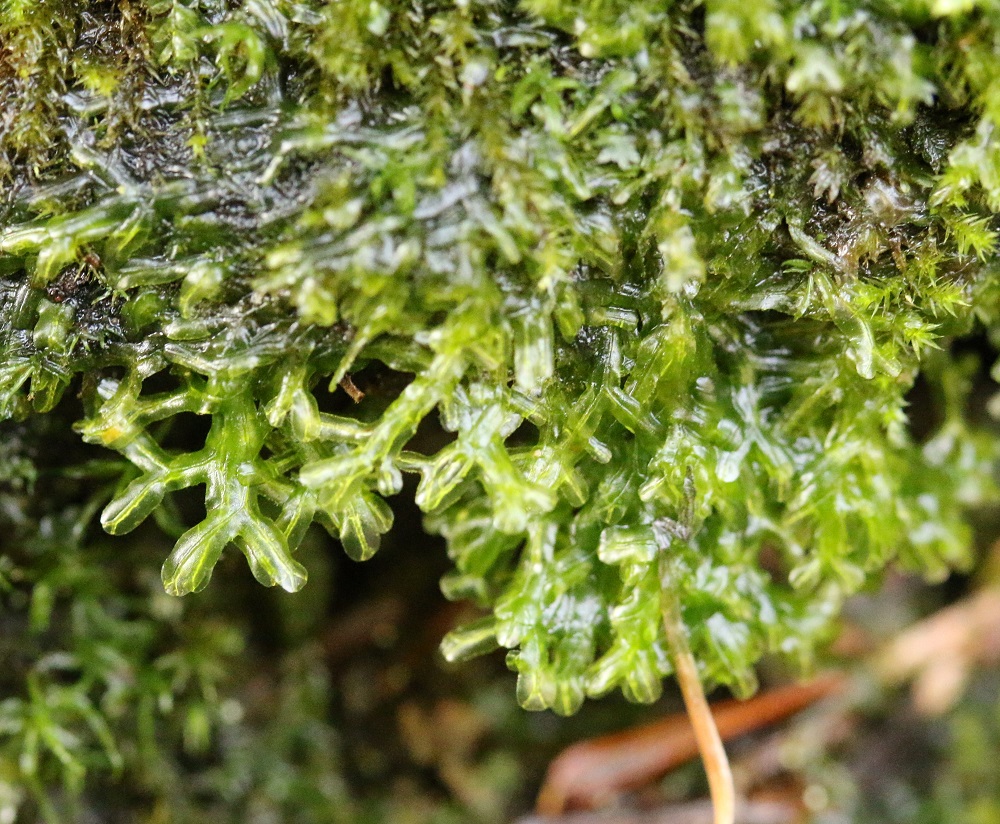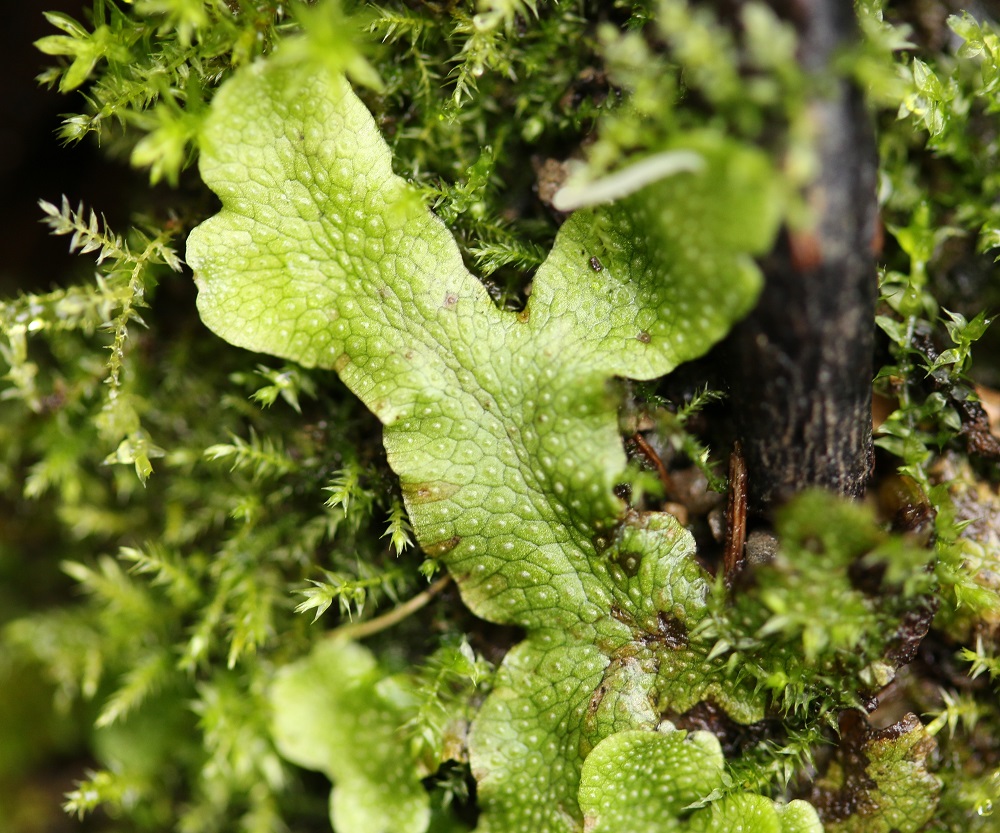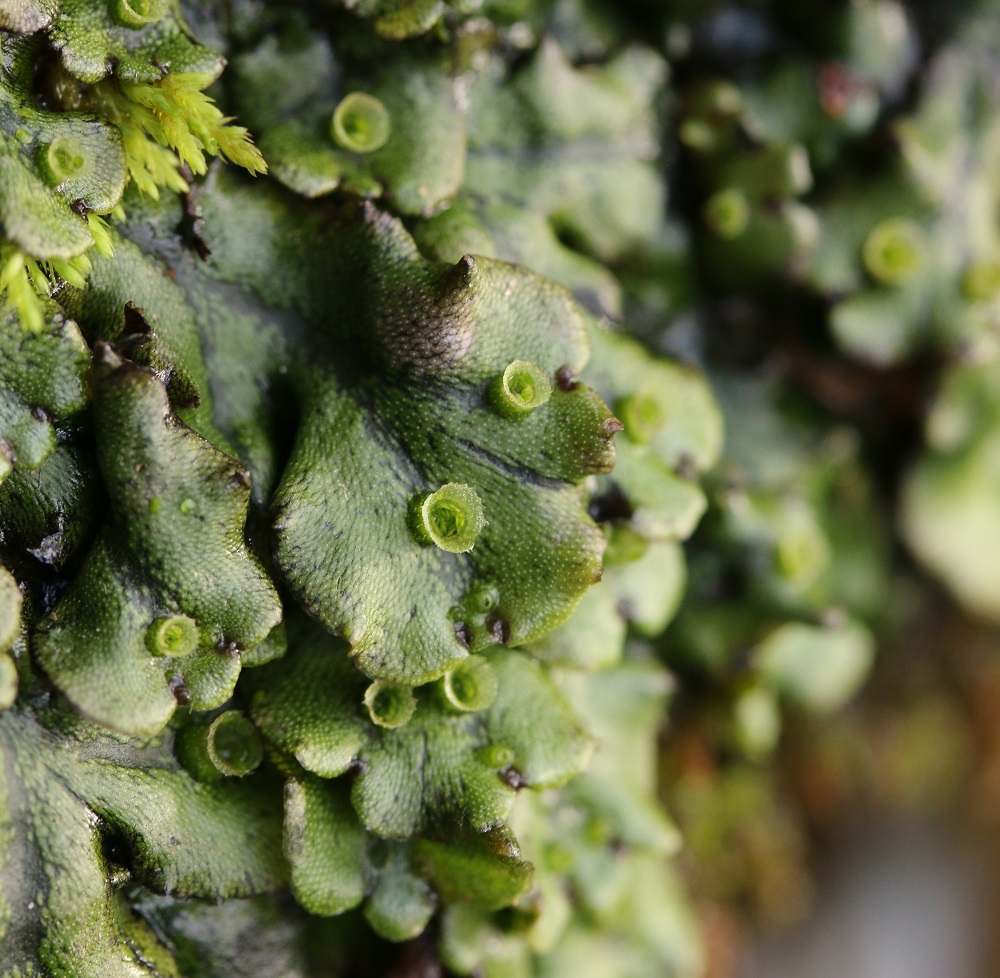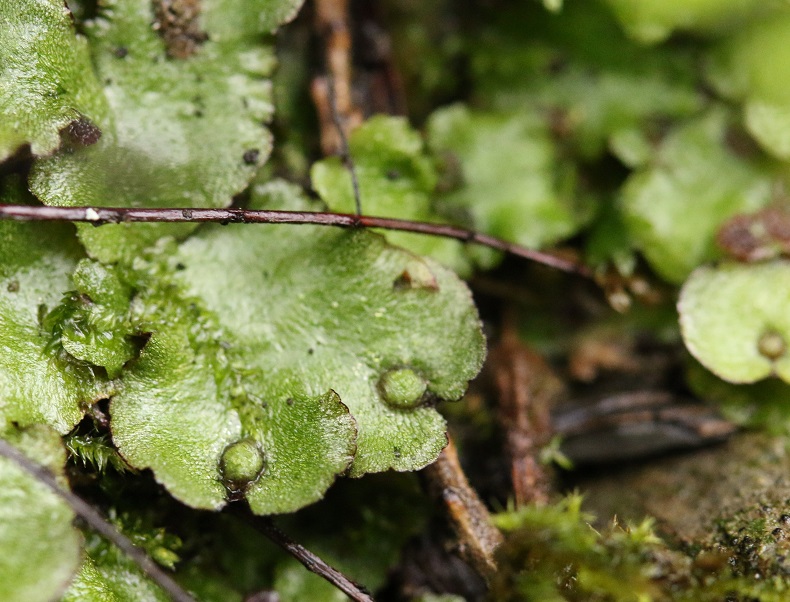As I mentioned in my last post, liverworts are small spore-producing plants in the Marchantiophyta (Ralph Pope, Mosses, Liverworts and Hornworts: A Field Guide to Common Bryophytes of the Northeast, 2016). Liverworts have two very different forms – the complex, vine-like leafy liverworts (discussed in my earlier post) and the flat, flap-like thalloid liverworts (discussed below).
The forked veilwort (Metzgeria furcate, Metzgeriaceae) is a highly branched light green liverwort that has distinct midribs on the thalli. This liverwort grows as thick mats on wet limestone cliffs. There are tiny hairs that grow singly along the edge of the thalli.

The highly forked growth of the forked veilwort is a important identifying characteristic (Metzgeria furcate, Metzgeriaceae)
The snakeskin liverwort (Conocephalum salebrosum, Conocephalaceae) has thick, light green thalli. The long thalli have polygon-like cells with a single pore per cell. This thalloid liverwort is aromatic when crushed (to my nose, it smells spicy and floral). The snakeskin liverwort is found by seeps or in wet ravines.

If you are unsure if you found snakeskin liverwort, crush part of the plant and smell it! (Conocephalum salebrosum, Conocephalaceae)
One of the most common liverworts in our area is the umbrella liverwort (Marchantia polymorpha, Marchantiaceae). This liverwort has dark green thalli that usually grow in overlapping clusters. This thalloid liverwort also has polygon-like cells with a single pore per cell. This species usually has gemma cups, which are small cup-like structures filled with cell packets that can create new plants. This species is found on wet, disturbed sites such as fertilized lawns.

The umbrella liverwort can be found in a wide variety of habitats and the commonly seen gemma cups help with its identification (Marchantia polymorpha, Marchantiaceae)
The small mushroom-headed liverwort (Reboulia hemisphaerica, Aytoniaceae) has thick green thalli with dark margins. This species does not have visible cells or pores. This thalloid liverwort generates diploid parts near the end of the thalli. This liverwort is usually found on wet calcareous rocks.

The small mushroom-headed liverwort has a long name for a little thalloid liverwort. The reproductive structures at the end of the thallus is an identifying characteristic (Reboulia hemisphaerica, Aytoniaceae)